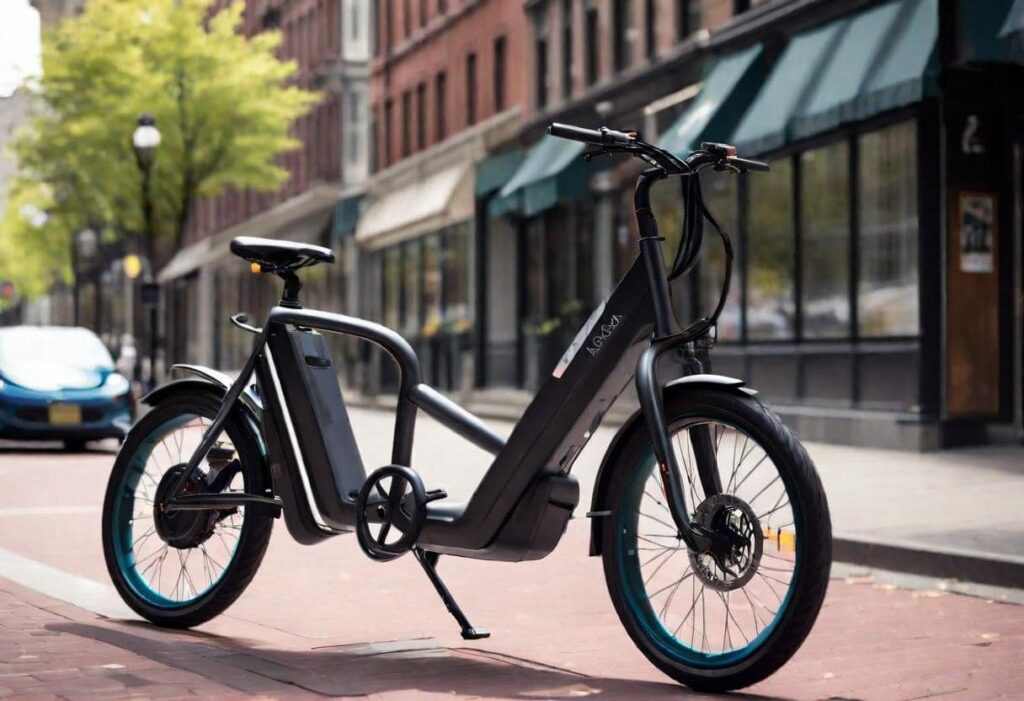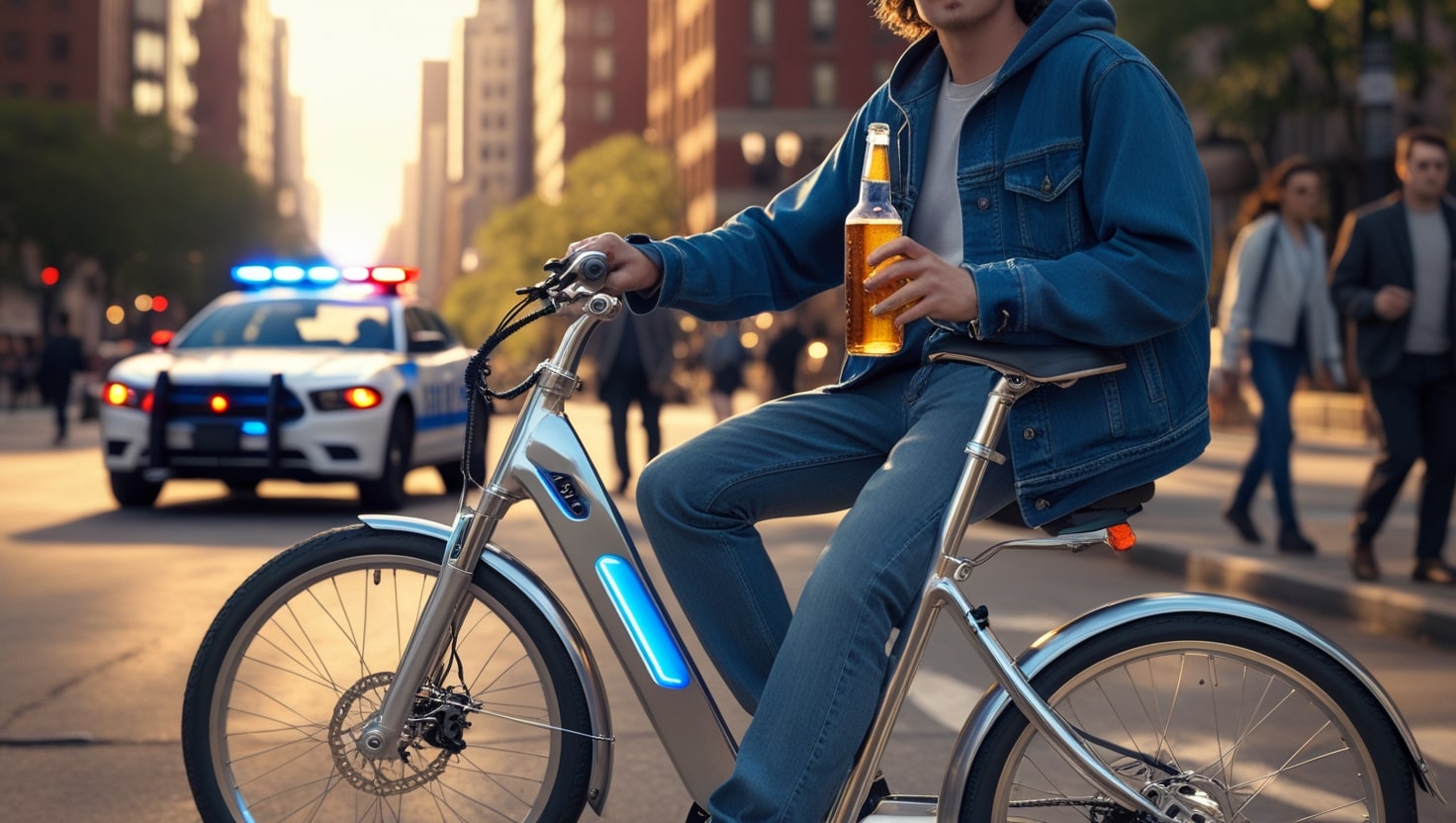Riding a bike on the sidewalk is a topic that can be quite complicated and varies widely depending on where you live. Different states and local areas have their own laws and ordinances on this matter. For instance, some places might allow cycling on sidewalks, while others strictly prohibit it. The legal framework behind these rules can change from town to town, and even from block to block. So, if you’re a cyclist, it’s important to be aware of the specific laws in your area.
Understanding whether it’s illegal to ride a bike on the sidewalk often requires looking at a general overview of state and local regulations. This can get pretty complicated, as sidewalk-riding rules are not uniform across the country. In many places, the rules vary significantly. If you find yourself in a scenario where you’re unsure, it’s always a good idea to get in touch with a local lawyer who can provide specific legal advice. This ensures you’re adhering to the right legal standards and helps avoid any potential fines or issues. Remember, a local lawyer can be a great resource to find the exact information you need and help you navigate these rules.
ALABAMA
In Alabama, the law is quite clear when it comes to bicycles. According to state laws, bicycles are treated as vehicles and must follow the same traffic rules that govern motor vehicles. This means the state law explicitly prohibits any vehicles from driving on the sidewalk, and this law also applies to bicycles. Unlike some other states, Alabama does not have any special laws that allow bicycles to be ridden on the sidewalk. As a result, cyclists must adhere to the same rules as cars and trucks, keeping the sidewalks clear for pedestrians. This approach aims to ensure safety for both cyclists and walkers by maintaining a clear separation between road and sidewalk use.
- Related Post
- Can You Ride an Electric Bike on the Sidewalk?
ALASKA
In Alaska, sidewalk cycling is generally legal, which means you can usually ride your bike on the sidewalks. However, some exceptions must be noted. For instance, riding on sidewalks in business districts is not allowed, and certain areas might have an official traffic-control device that prohibits sidewalk cycling. It’s important to pay attention to these specific rules to ensure you are riding legally and safely in Alaska.
ARIZONA
In Arizona, the rules about riding bicycles on the sidewalk are a bit different. Unlike in some other states, bicycles are not defined as vehicles here. The Arizona statute does not specifically mention riding a bicycle on the sidewalk, so it is not explicitly prohibited or allowed by state law. This means that while the state does not ban sidewalk cycling, it also doesn’t give it a clear green light.
Cyclists in Arizona need to be aware of local ordinances in their municipality. These laws can vary widely, and what is legal at the statewide level might not be permitted in every city. Some cities have bans on sidewalk cycling, and violating these laws can result in fines. It’s essential for cyclists to check the specific rules in their area to avoid any legal issues while riding.

ARKANSAS
In Arkansas, no state law specifically mentions cycling on the sidewalk, but various cities and municipalities have local ordinances that either prohibit or regulate riding your bike on the sidewalk. For example, in Little Rock, North Little Rock, Hot Springs, and Maumelle, cycling on sidewalks is directly or indirectly prohibited, as stated by the Arkansas Department of Transportation.
Cyclists in Arkansas are legally considered the same as pedestrians when biking on crosswalks, with all the same rights and duties. This means that cyclists at intersections are required to yield to pedestrians and signal audibly when passing them. These rules help ensure safety for both cyclists and pedestrians, creating a shared understanding of responsibilities on shared paths.
CALIFORNIA
In California, the statute does not specifically allow or prohibit riding a bicycle on the sidewalk. According to the California Vehicle Code Section 21206, local governments have the right to make their own traffic ordinances that govern bicycles. This means the rules can vary significantly depending on the city. For example, five California cities—Carlsbad, El Cajon, Escondido, National City, and Vista—have banned cycling on sidewalks.
In Los Angeles, cyclists may use the sidewalks but must be aware of pedestrians and operate their bicycles safely. LA cyclists also need to be cautious when passing in front of storefronts. Similarly, in Santa Clarita, cyclists can ride on the sidewalks in most parts of the city, but not in business districts. These local rules help ensure that both cyclists and pedestrians can coexist safely.
COLORADO
In Colorado, the law permits sidewalk cycling. According to Colo. Rev. Stat. §§42-4-710 and 42-4-1412(10), the only vehicles permitted on sidewalks are bicyclists, electric bicycles, and other human-powered vehicles. Cyclists in Colorado have the same rights and duties as pedestrians when on sidewalks. However, they are legally required to follow specific rules. Cyclists must yield the right-of-way to pedestrians and give audible signals before passing them. They should also avoid riding a bicycle where it is prohibited by traffic control devices or local laws.
Additionally, cyclists are required to dismount before entering crosswalks where required. These rules help ensure safety and a smooth flow of movement for both cyclists and pedestrians. By following these guidelines, everyone can share the sidewalks safely and responsibly.
You may also like to read What Goes On at Sturgis Bike Rally

CONNECTICUT
In Connecticut, cyclists are allowed to ride their bikes on sidewalks as long as they abide by specific rules. They must yield the right-of-way to pedestrians and audibly signal within a reasonable distance before passing them. It’s important for cyclists to be aware of local ordinances and avoid cycling on the sidewalk in jurisdictions where it is prohibited. This ensures the safety and comfort of both pedestrians and cyclists.
DELAWARE
In Delaware, state law allows cyclists to ride on sidewalks in most areas. Cyclists are legally considered the same as pedestrians when they ride their bikes on the sidewalk. However, there are some situations where it is not legal to ride on the sidewalk. For example, in business districts, when official traffic-control devices prohibit it, or if there is a usable bicycle-only lane next to the sidewalk.
WASHINGTON, DC
In the District of Columbia, bicyclists can ride on sidewalks as long as they don’t create a hazard and follow certain rules. Bicyclists should avoid riding in the Central Business District unless the sidewalks are expressly designated for cyclists. Additionally, they should not ride in any area where it is expressly prohibited. Yielding the right-of-way to pedestrians is essential, and cyclists must follow posted speed limits or ride at a speed that is safe for the weather conditions.
Cyclists must also avoid leaving the sidewalk and entering the road too suddenly for drivers to react. These rules are in place to ensure the safety of both cyclists and pedestrians. By adhering to these guidelines, cyclists can enjoy riding in the city without causing disruptions or endangering others.
FLORIDA
In Florida, bicycles are legally defined as vehicles. However, Florida bike law still allows cyclists to operate their bikes on sidewalks. When doing so, they have the same duties and rights as pedestrians. Cyclists must yield to pedestrians and give an audible signal before passing them.
If a cyclist is involved in a bicycle accident on a sidewalk in Florida, bicycle accident lawyers can help. They ensure that injured cyclists receive the compensation and support they deserve.
GEORGIA
In Georgia, bicycles are considered vehicles under the law, so they are not allowed to be ridden on sidewalks. There are a few exceptions to this rule. Local ordinances may allow individuals aged 12 and under to ride on the sidewalk. This approach helps ensure the safety of younger riders while maintaining clear guidelines for adults and older cyclists.
HAWAII
In Hawaii, bicycles can be operated on sidewalks except in business districts. A cyclist must keep their speed under ten miles per hour and yield to all pedestrians. Motorized bikes are not permitted on sidewalks. This ensures safety and smooth movement for both cyclists and pedestrians.
IDAHO
In Idaho, bicyclists may ride on sidewalks if they yield to pedestrians and give an audible signal before passing. There are some exceptions where local ordinances or official traffic control devices like signs might specifically prohibit cycling on the sidewalk in certain areas. This helps ensure safety for both pedestrians and cyclists.

ILLINOIS
In Illinois, state law allows bicyclists to use sidewalks provided they yield the right-of-way to pedestrians. Cyclists must also give an audible notification when overtaking and passing pedestrians. This helps ensure that both cyclists and pedestrians can safely share the sidewalks.
Indiana
In Indiana, no statute mentions riding a bicycle on the sidewalk, so it is neither allowed nor prohibited at the state level. Cyclists should check local ordinances for rules about cycling on sidewalks in their jurisdictions. Some ordinances allow cycling on the sidewalk but may have specific requirements for cyclists to follow.
IOWA
In Iowa, there are no state-wide laws regarding cycling on sidewalks. Iowa is one of eleven states where cyclists must check their local ordinances as some municipalities might have their own laws. This means that while there is no uniform rule across the state, local areas can set specific regulations for sidewalk cycling.
KANSAS
In Kansas, there is no statute specifically about sidewalk cycling. However, cyclists in Kansas are considered separate from vehicles when on the road but still have the same rights and duties as drivers. This means cyclists should be aware of local regulations and ensure they follow the rules of the road to maintain safety for all.
KENTUCKY
In Kentucky, state law allows bicycles to be operated on sidewalks and crosswalks unless a local law or ordinance prohibits it. Cyclists on sidewalks have the same rights and duties as pedestrians in similar circumstances. However, there are some mandatory rules for riding on the sidewalk. When there are pedestrians, cyclists need to slow down to match the normal walking speed. They should also slow down when approaching crosswalks, driveways, or other crossings where they might encounter a motor vehicle.
Additionally, cyclists should avoid leaving sidewalks or crosswalks suddenly and riding into the path of another vehicle, as this could cause a hazard. Cyclists must always yield to pedestrians on all sidewalks and crosswalks to ensure safety for everyone. By following these rules, cyclists can help create a safer environment for both themselves and pedestrians.
LOUISIANA
In Louisiana, there are no state-level laws that specifically mention cycling on sidewalks. This means that whether or not you can ride your bike on the sidewalk depends on local regulations rather than statewide rules. Cyclists should check local ordinances to understand the specific rules in their area.

MAINE
In Maine, there is no specific statute that either allows or disallows riding a bicycle on the sidewalk. This means cyclists need to be aware of local rules and regulations to understand where they can ride their bikes safely.
MARYLAND
In Maryland, riding a motorcycle on sidewalks is generally not allowed, unless specific municipalities allow it through local laws and ordinances. In places where cycling is permitted on the sidewalk, cyclists may also use crosswalks.
Some municipalities have ordinances that specifically prohibit cycling on any footpaths in the city. For example, in Baltimore, Subtitle 18 of the Baltimore City Code addresses this issue.
MASSACHUSETTS
In Massachusetts, the law allows cyclists to ride on sidewalks outside of business districts if it is necessary due to safety concerns. However, signs or markings in the area may prohibit sidewalk cycling. This flexibility ensures that cyclists can prioritize their safety while also adhering to local regulations.
MICHIGAN
In Michigan, state law allows bicycles to be operated on sidewalks. A cyclist must yield to pedestrians and provide audible signals with sufficient notice before passing pedestrians and other cyclists. While riding on sidewalks, cyclists have the same rights and legal duties that apply to pedestrians on the sidewalk.
MINNESOTA
In Minnesota, cyclists can ride their bikes on sidewalks outside of business districts. However, they must yield the right-of-way to pedestrians and notify them before overtaking and passing. This ensures a safe environment for both cyclists and pedestrians.
MISSISSIPPI
In Mississippi, there are no state laws specifically about cycling on the sidewalk. However, municipalities may have their own ordinances. This means that cyclists need to check local regulations to understand where they can ride safely.
MISSOURI
In Missouri, cycling on the sidewalk is legal if cyclists follow three rules. First, do not ride a bicycle on the sidewalk in a business district. Second, yield the right-of-way to any pedestrian and provide an auditory notice before passing them. Finally, avoid operating a motorized bicycle on the sidewalk.
MONTANA
In Montana, cyclists are legally permitted to ride on sidewalks as long as they yield to pedestrians. They have the same rights and legal responsibilities as pedestrians on the same footpath. This ensures that both cyclists and pedestrians can safely share the sidewalks.
NEBRASKA
In Nebraska, the law allows cyclists to ride on sidewalks and crosswalks. Cyclists have the same rights and legal duties that apply to pedestrians in similar circumstances. Cyclists must yield to pedestrians to ensure everyone’s safety.
NEVADA
In Nevada, there is no state-level statute regarding cycling on the sidewalk. However, local ordinances may prohibit or allow it. Cyclists should check local rules to ensure they are riding legally. In New Hampshire, bicycles are legally defined as vehicles, and the same rules and duties that apply to motor vehicles also apply to bicycles. This means bicycles are not allowed to be operated on sidewalks.
NEW JERSEY
In New Jersey, the law does not specifically prohibit sidewalk cycling, but many local ordinances do. The New Jersey Department of Transportation states that sidewalks are for pedestrians and that cyclists can cause accidents by using them. However, there is an exception for young children, as sidewalks are considered safer for them.
NEW MEXICO
In New Mexico, sidewalk cycling is neither explicitly permitted nor prohibited by state law. However, local ordinances may have specific rules that cyclists need to follow. It is important to check the local regulations to know where you can ride safely.
NEW YORK
In New York, the state does not specifically allow or prohibit riding a bicycle on the sidewalk. In New York City, riding on the sidewalk is permitted only if there is an official sign indicating permission. This means cyclists need to pay attention to local signs to know where they can ride legally.
NORTH CAROLINA
In North Carolina, there are no specific laws regarding cycling on sidewalks at the state level. North Carolina is one of eleven states where such rules can vary between different municipalities. Cyclists should check local laws to understand what is allowed in their area.
NORTH DAKOTA
In North Dakota, bicycles are classified as vehicles and are prohibited from use on sidewalks. This means cyclists must use the road and follow the same rules as motor vehicles.
OHIO
In Ohio, there is no legal ban on sidewalk cycling at the state level, but many cities have local ordinances that prohibit it. Some cities allow sidewalk cycling outside of business districts. This includes large Ohio cities like Cleveland, Cincinnati, and Columbus.
OKLAHOMA
In the state of Oklahoma, there are no statutes governing sidewalk cycling. However, many cities have local restrictions. For instance, Oklahoma City allows cyclists to use sidewalks when outside of business districts. This means riders should check local laws to understand where they can ride safely.
OREGON
In Oregon, cyclists are permitted to use sidewalks under certain conditions. They must not exit a sidewalk or crosswalk and enter the path of a vehicle without giving the vehicle sufficient space. Cyclists should always provide an audible warning before passing pedestrians. Pedestrians must be given the right-of-way by cyclists on the sidewalk.
Cyclists should avoid speeds higher than an average walking pace when approaching or entering crosswalks or traffic. They have a responsibility to operate bicycles safely on sidewalks at all times. Cyclists have the same duties and rights as pedestrians on sidewalks. Motorists are also required to yield the right-of-way to cyclists on sidewalks. If cyclists are injured by motorists who failed to yield, they should learn about their options from an experienced Oregon bicycle accident attorney.
PENNSYLVANIA
In Pennsylvania, the Department of Transportation states that cyclists may ride on sidewalks but must provide pedestrians with the right-of-way on both sidewalks and bicycle paths. As in many other states, cyclists are legally required to signal audibly when approaching and passing pedestrians. However, bicycling is not permitted on sidewalks in business districts unless indicated by a traffic sign or other official traffic control device.
RHODE ISLAND
In Rhode Island, bicycles and other human-powered vehicles can be operated on sidewalks and along roadway crosswalks unless prohibited by signs posted in the area.
SOUTH DAKOTA
In South Dakota, sidewalk cycling is permitted but comes with specific requirements. Cyclists must stop before entering crosswalks, highways, or other sidewalk areas. They must always yield the right-of-way to pedestrians and give an audible signal before passing them.
TENNESSEE
In Tennessee, there is no law that prohibits cycling on sidewalks, so it is generally allowed. However, some municipalities have local ordinances against it. This means that while you can usually ride on sidewalks, you need to check local rules in your area.
TEXAS
According to the Texas Department of Transportation, there is no state law against riding bicycles on sidewalks. However, many municipalities have local ordinances that prohibit it. These prohibitions are often indicated by posted signs, so cyclists should always look for local regulations before riding on sidewalks.
UTAH
In Utah, the law permits sidewalk cycling with certain restrictions. Pedestrians always have the right-of-way, and cyclists must give audible signals when passing. Cyclists should reduce speed based on current conditions and avoid sidewalk cycling in prohibited areas as indicated by traffic control devices or local ordinances.
VERMONT
In Vermont, there is no specific law against sidewalk cycling, but some cities, like Burlington, have prohibited cycling on sidewalks in main areas of commerce. This means cyclists need to be aware of local regulations, especially in busy city areas.
VIRGINIA
In Virginia, unless prohibited by local ordinances, cyclists can ride their bikes on sidewalks. They are legally considered as pedestrians and must follow the same right-of-way and audible signaling requirements found in many other states.
WASHINGTON
In Washington, cyclists are permitted to ride on sidewalks and have the same duties and rights as pedestrians. They must yield to pedestrians, and failing to do so could result in a fine of up to $500.
WEST VIRGINIA
In West Virginia, sidewalk cycling policies are determined at the local level due to a lack of state laws on the subject. This means that rules can vary depending on the specific area within the state.
WISCONSIN
In Wisconsin, the rules for biking on sidewalks vary by region. Where bicycling is permitted on sidewalks, bicyclists must yield the right-of-way to pedestrians, ride carefully, and provide an audible alert before proceeding in the same direction. This ensures both cyclists and pedestrians can share the sidewalk safely.
WYOMING
In Wyoming, bicycles and other human-powered vehicles are permitted on sidewalks. This means that cyclists can ride their bikes on sidewalks legally throughout the state.
LEGAL GUIDANCE FOR CYCLISTS
When it comes to laws about sidewalk riding, things can get complicated. Rules vary from town to town, and even from block to block. This is just a general overview, not legal advice for any specific scenario. Always check local regulations to understand the exact rules in your area.
Is it illegal to ride a bike on a sidewalk?
Whether it is illegal to ride a bicycle on the sidewalk depends on the city you are in. For instance, in New York City, it is illegal to ride your bike on the sidewalk unless you are age 12 or younger and your bicycle’s wheels are less than 26 inches in diameter. This rule ensures that only young children, who might not be safe riding on the streets, can use the sidewalks for biking.
Several states like Colorado, Florida, Michigan and South Dakota allow riding your bike on the sidewalk. However, cities have the right to make their own rules.
What states allow riding bikes on sidewalks?
Local authorities sometimes make exceptions to sidewalk biking bans to make biking safer for kids. This means some cities within certain states may ban bikes on sidewalks even if the state allows it.
The following states allow a person to ride their bike on the sidewalk: Alaska, Arkansas, Colorado, Connecticut, Delaware, Washington, DC, Florida, Hawaii, Idaho, Illinois, Kentucky, Massachusetts, Michigan, Minnesota, Missouri, Montana, Nebraska, New York, Ohio, Oregon, Pennsylvania, Rhode Island, South Dakota, Utah, Virginia, Washington, and Wisconsin. Always check local rules, as some cities within these states may have their own regulations against sidewalk biking.
What states prohibit riding bikes on sidewalks?
In some states, riding bikes on sidewalks is not allowed. These include Alabama, Arizona, California, Georgia, Indiana, Iowa, Kansas, Louisiana, Maine, Maryland, Mississippi, Nevada, New Hampshire, New Jersey, New Mexico, North Carolina, North Dakota, Oklahoma, South Carolina, Tennessee, Texas, Vermont, and West Virginia. It’s important to note that not all states have a mandatory bicycle helmet law either, so always check local regulations for specific rules.








